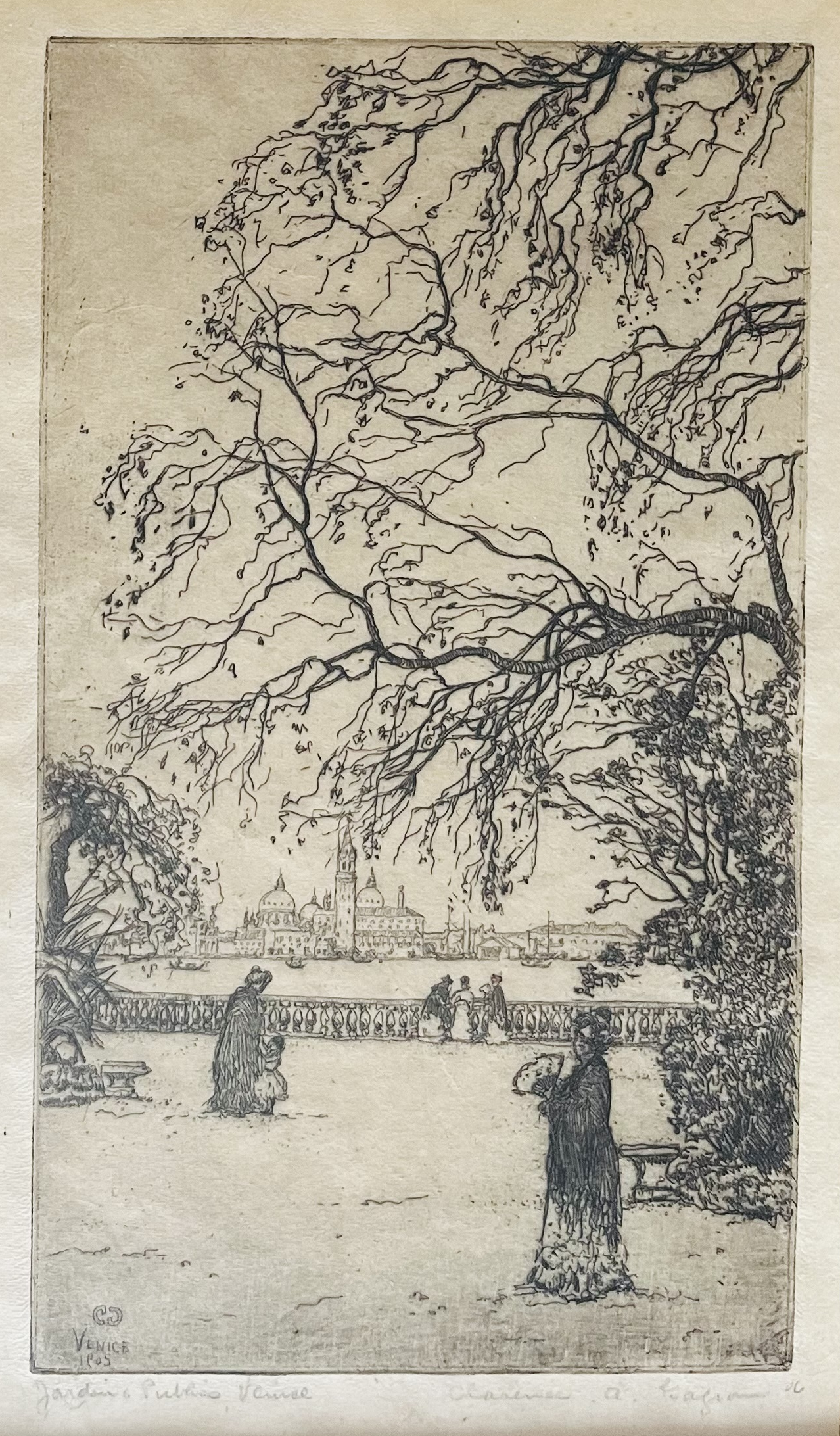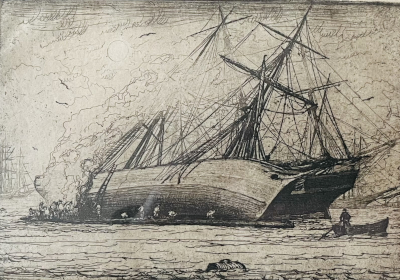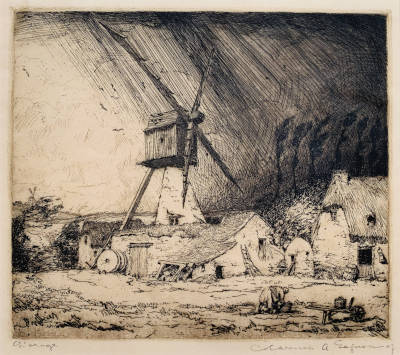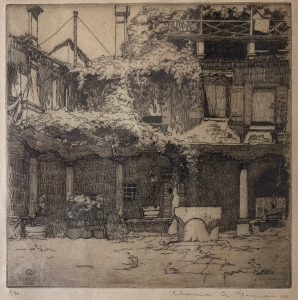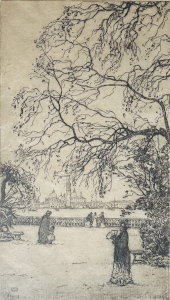Until 1981 Clarence Gagnon was relatively unknown to the public as engraver. The most complete collections, those of the Montreal Museum of Fine Art and the National Gallery, were rarely shown. It took determination of Mr Ian Thom, then curator of the Art Gallery of Greater Victoria, to show us just how superb an engraver Clarence Gagnon was.
When he was Brymner’s student, Gagnon showed an interest in engraving, producing a few dry-point portraits. These were experiments. The first etching “Ploughing With Oxen” was done in 1902 and was inspired by Horatio Walker.
But in the summer of 1904 in Pont de l’Arche and in Paris during the winter of 1905, Clarence Gagnon became a real engraver. “En novembre”, his liveliest engraving, shows an astonishing freedom of movement, even more remarkable because it is his second or third only.
The winter of 2005-2006 was devoted to finishing the scenes of Venice that Gagnon had begun there. One of them in particular captures our attention. “Public gardens, Venice”. It is somewhat audacious piece, and is directly influenced by Japanese art. Gagnon was crazy about Japan at the time and was paying homage – the characters, with fans, are inspired by the Japanese; end etching, is squarely in the tradition of Japanese prints. It is interesting to compare this etching with a pastel of the same subject which panile are barely visible on the other side of the lagoon, and Japanese characters are missing.
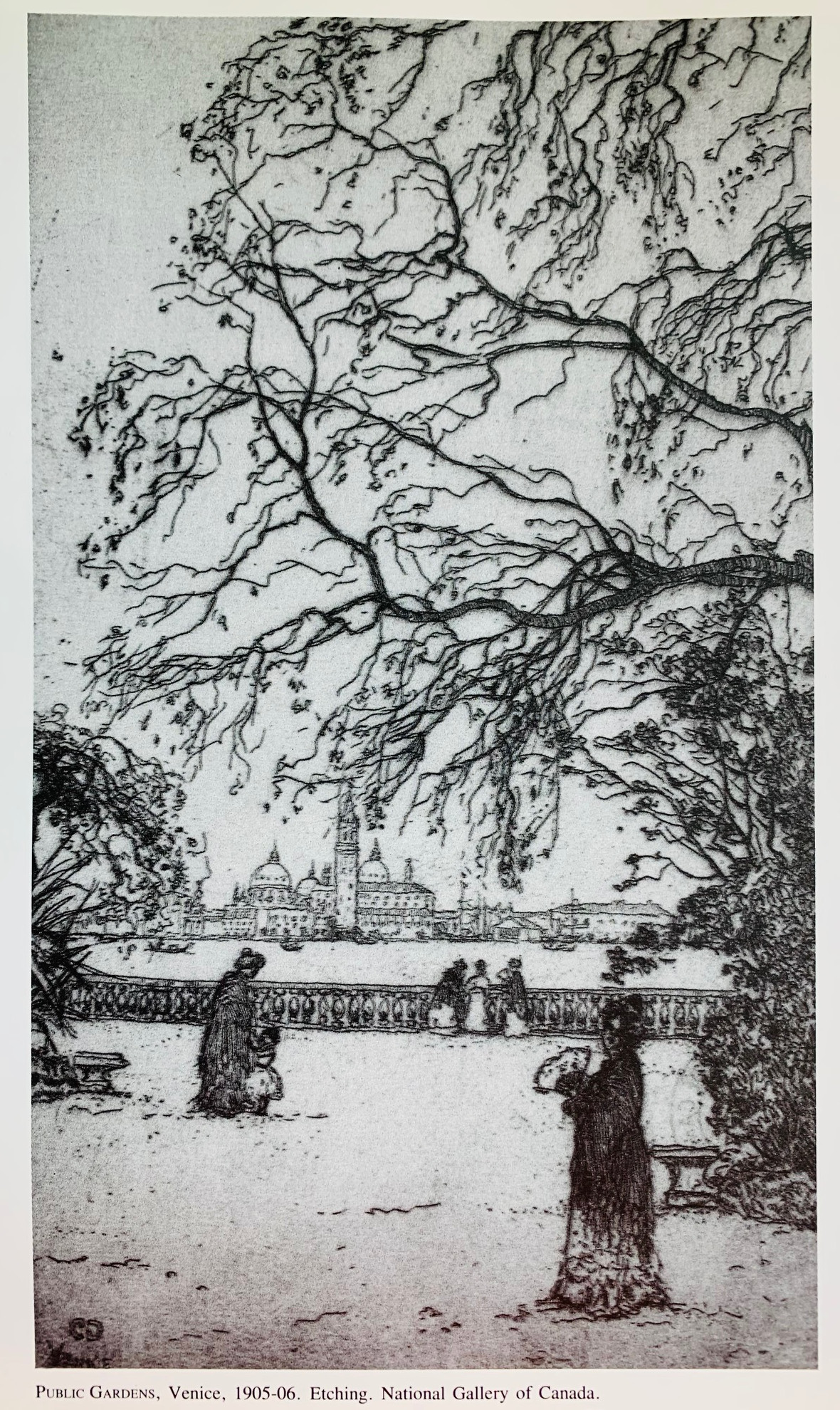
Public Gardens, Venice, 1905-1906
Clarence Gagnon by Boissay, René (Published by Marcel Broquet, Laprairie/Québec, 1988) Illustrated on page 33
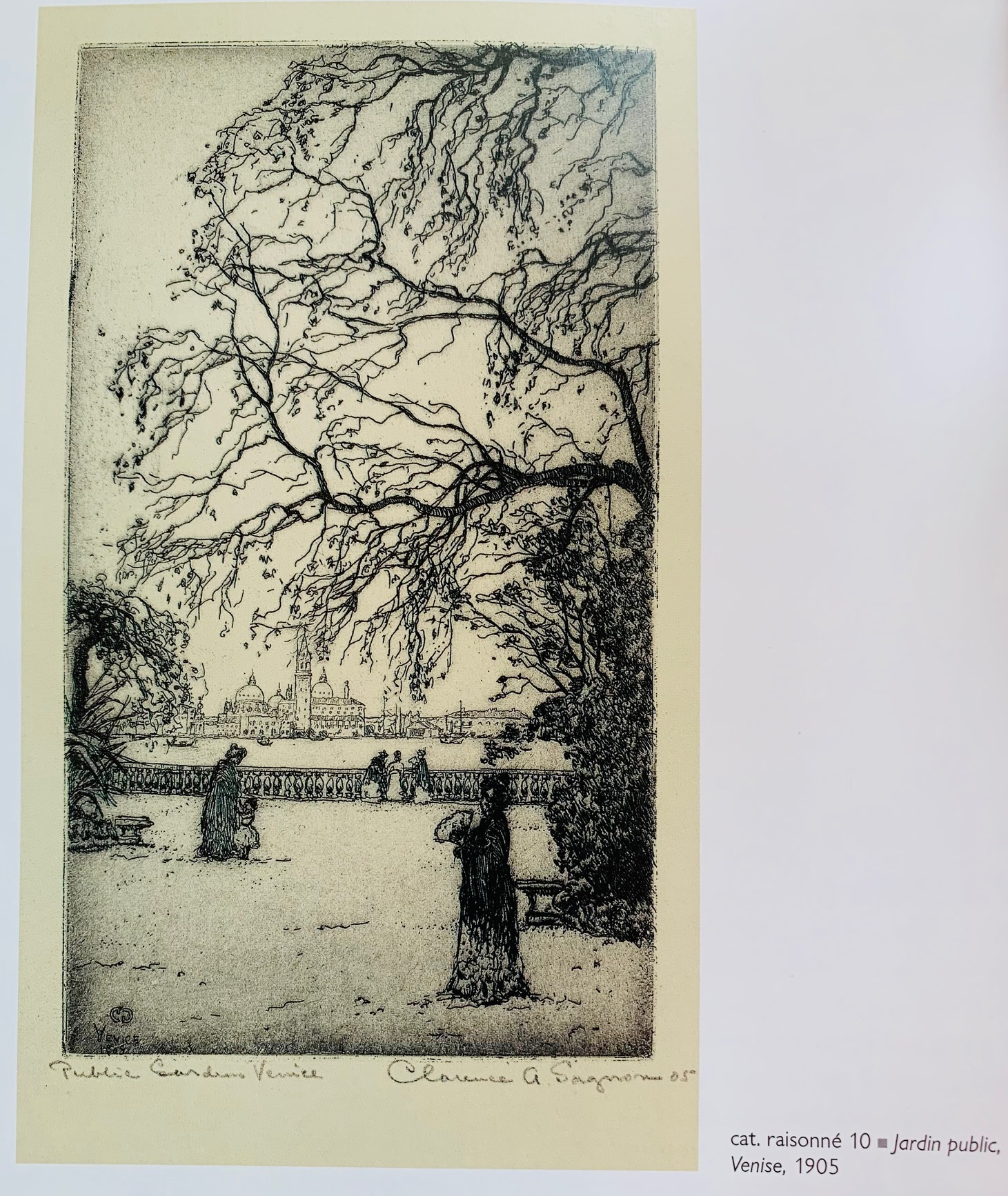
Clarence Gagnon: rêver le paysage, 2011, ISBN 9782761922074
illustrated page 250
In the etchings of Venice, Gagnon showed his versatility; it is hard to believe that in a single year he could have made so much progress. Gagnon understood the city, and while the challenges are different from subject to subject, each one is directly linked to Venice, to the nature of the city.
Here the engraver has perfect control over the action of the acid on the plate, knowing exactly when to stop. It is possible that he used dry-point to complete certain details. Most of those of Venice were printed in series of thirty to fifty copies. In 1906, Gagnon was already able to get between fifty and seventy – five francs a print in Paris, and the catalogue for the showing at Morgan’s Gallery lists prices at between fifteen and twenty five dollars
